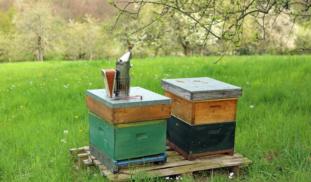Please wait...
About This Project
Bee station & Insect Museum Lieteberg
The aim of this study is to connect foraging activity of honey bees (Apis mellifera) to incoming food supply (nectar and pollen). With the use of sensors, weight trackers and counters, we'll track foraging bees entering or exiting the hive, as well as conditions in the hive. This information will tell us more about how changes in the food supplies and quality, such as from climate change or pesticide intake, can affect foraging, colony growth and colony health.

Browse Other Projects on Experiment
Related Projects
How do polar bears stay healthy on the world's worst diet?
Polar bears survive almost entirely on seal fat. Yet unlike humans who eat high-fat diets, polar bears never...
Uncovering hidden insect diversity associated with a likely undescribed gall-forming midge
Does a likely undescribed species of gall-forming midge (pers. comm. Ray Gagné) on Eriodictyon plants (Yerba...
Macrofungi of the California archipelago
The eight islands of the California Archipelago are a well-studied biodiversity hotspot — but we know almost...





